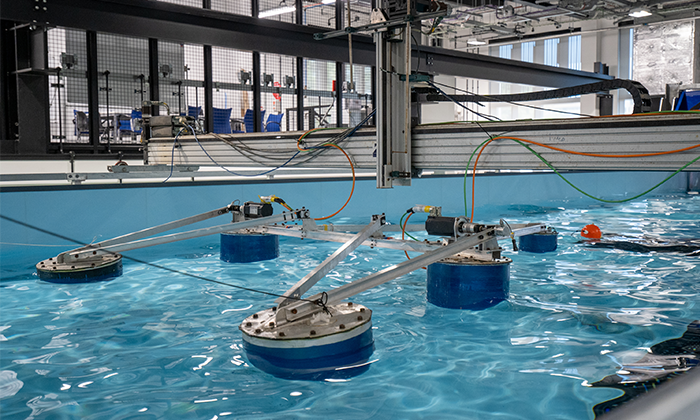The M4 wave energy converter, developed by Professor Peter Stansby at The University of Manchester, has been successfully launched in Albany, Australia. The device is designed to harness the power of ocean waves to generate electricity, and the project represents a significant step forward for renewable energy technology.
The Albany M4 project, led by Professor Christophe Gaudin and Dr. Hugh Wolgamot, and coordinated by Dr. Wiebke Eberling of the University of Western Australia, aims to explore the potential of wave energy to support local decarbonisation efforts along Australia’s Great Southern coast. The launch is a quarter-scale demonstration model designed specifically for this application and will absorb 1-10kW in the target sea-states. Sensors on the model will provide real-time data on energy production and performance.
The M4 project is fully open-access with all data collected during the device’s deployment being made available to scientists, developers, and the public. By making the performance data accessible to all, the project aims to drive further innovation in renewable energy.
The M4, or Moored Multi-Mode Multibody, is an innovative surface-riding wave energy converter consisting of multiple floats, connected by beams, in a 1-2-1 float arrangement for the Albany tests. The middle floats each support a hinge, and relative rotation between the bow and stern floats, due to the movement of the waves, creates power in a generator. It uses a single mooring point that allows the M4 to naturally turn and face the waves for better energy capture.
The M4 highlights Manchester’s leading role in renewable energy innovation and has been developed over the past decade with support from the Engineering and Physical Sciences Research Council (EPSRC) and the European Union. British Maritime Technology (BMT) was responsible for the structural and mooring design for Albany, while the power take-off (PTO) design was led by Dr Judith Apsley from The University of Manchester’s Department of Electrical and Electronic Engineering, and further developed with the support of Dr Nuwantha Fernando at RMIT University, Melbourne.
The launch, funded with 4.8 million AUD from the WA state government and the Blue Economy Cooporative Research Centre, with similar in-kind contributions, also showcases the wider benefits of emerging renewable technologies, with six local contractors and manufacturers contributing to the building, assembling, deploying, and decommissioning of the device in Albany.
The University of Manchester’s Hydrodynamics Lab played a key role in the development of the M4. Located in the heart of Manchester, this state-of-the-art facility allows researchers to simulate ocean conditions and test renewable energy designs.
Professor Peter Stansby highlighted its importance, stating: “The Hydrodynamics Lab is vital for advancing renewable energy research. While computational modelling provides valuable predictions, experimental validation is essential for understanding and optimising complex systems.”
For more information about The University of Manchester’s contributions to offshore renewable energy systems visit our Hydrodynamics Lab webpage.
